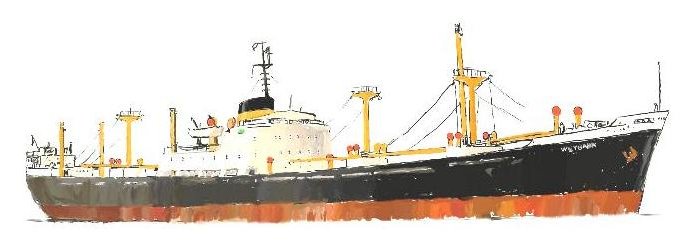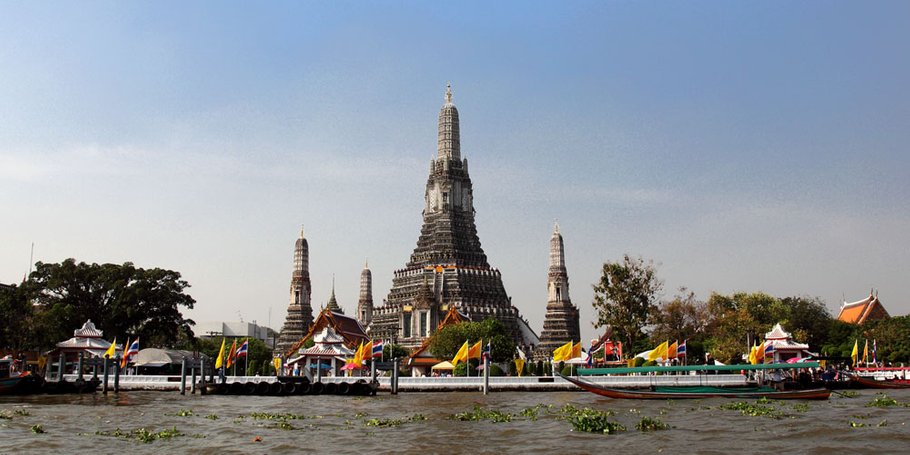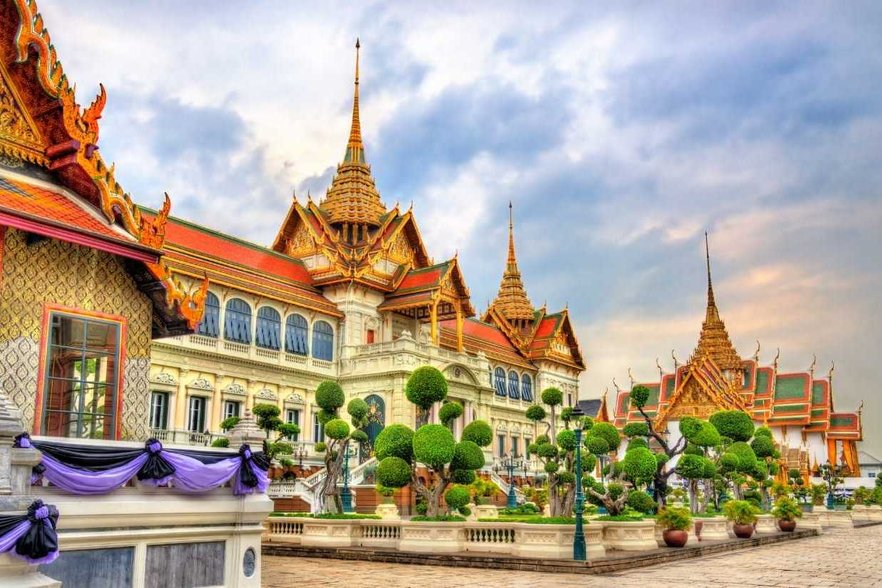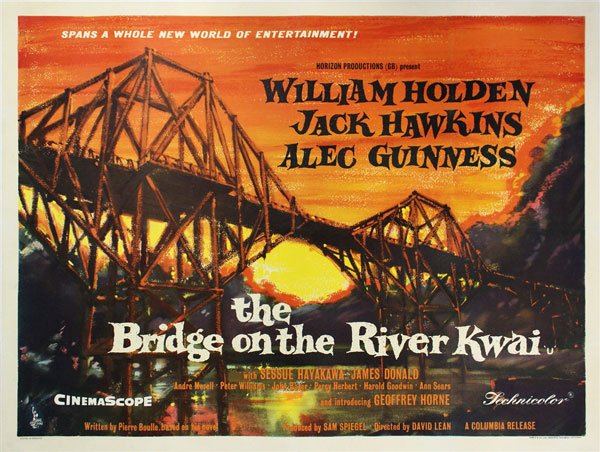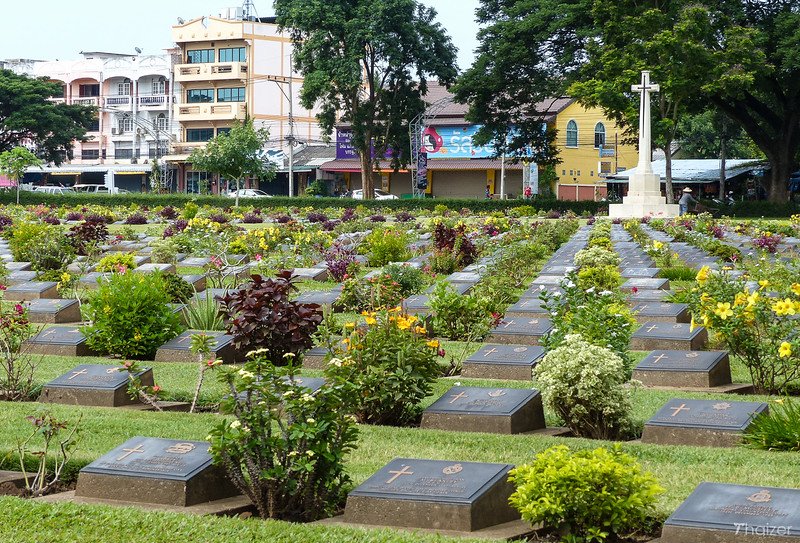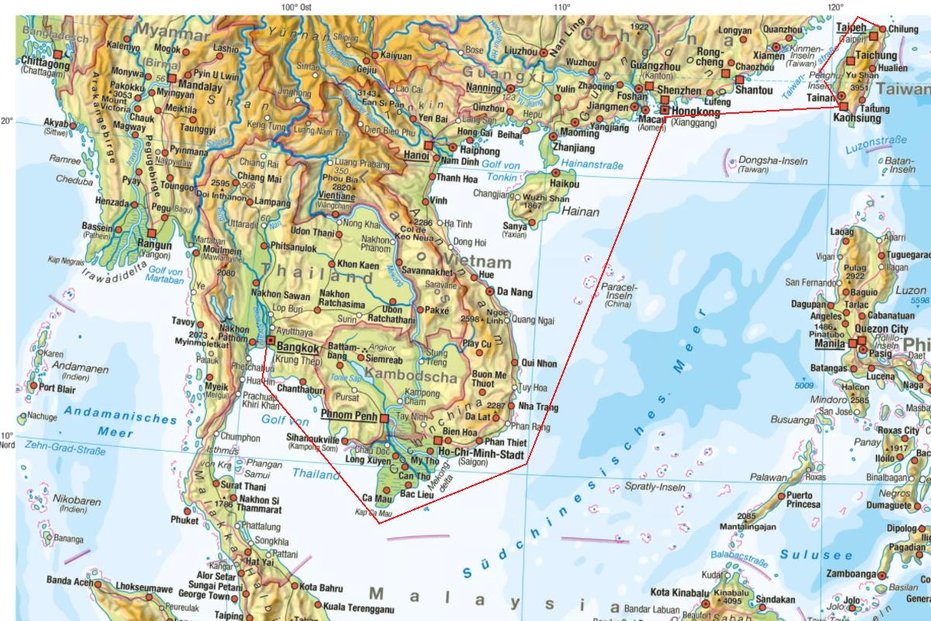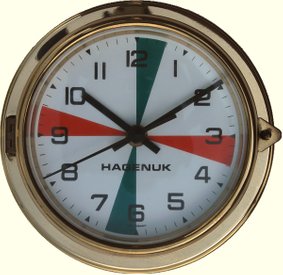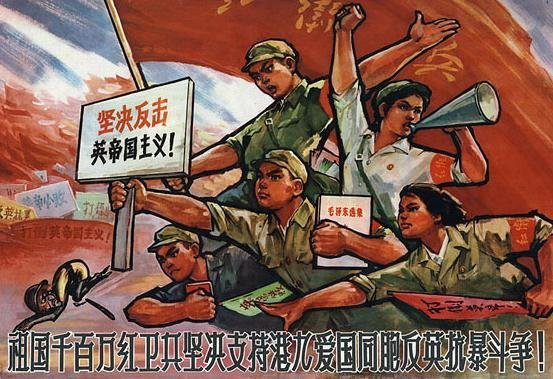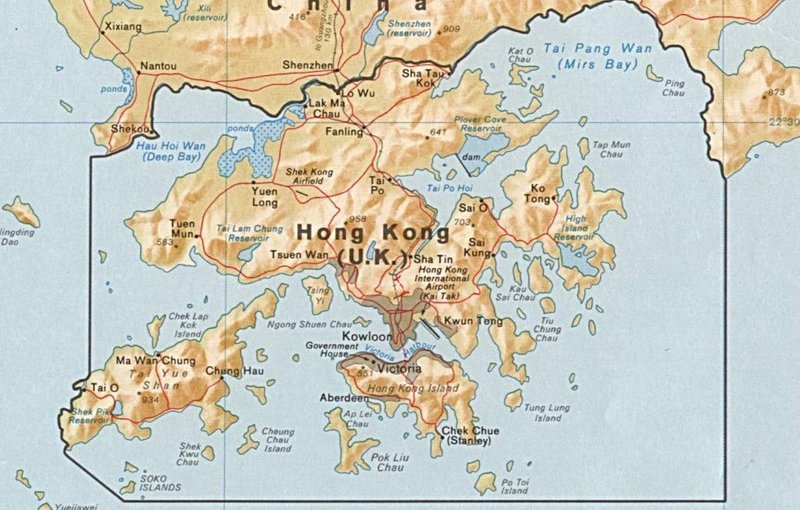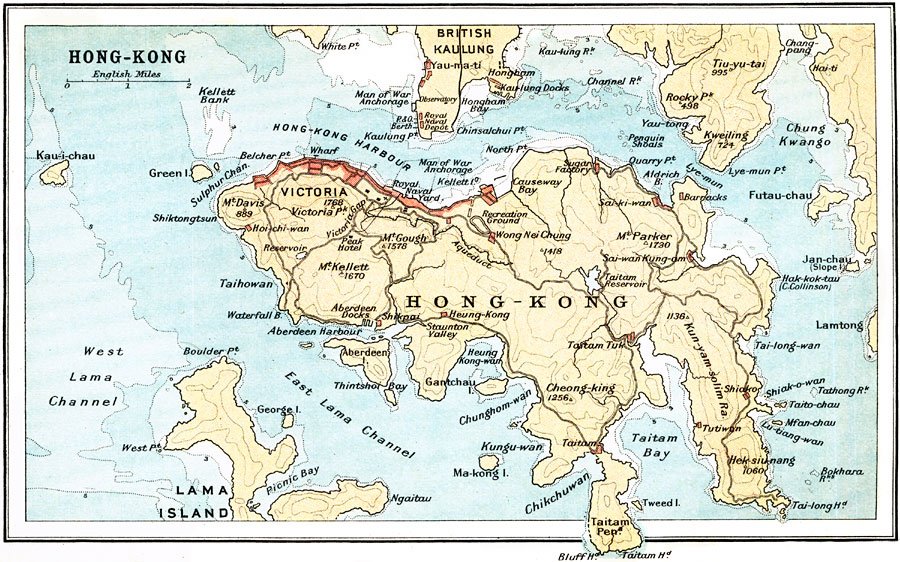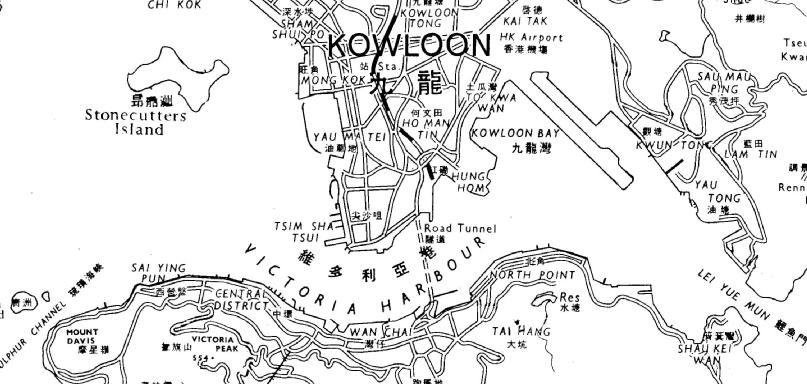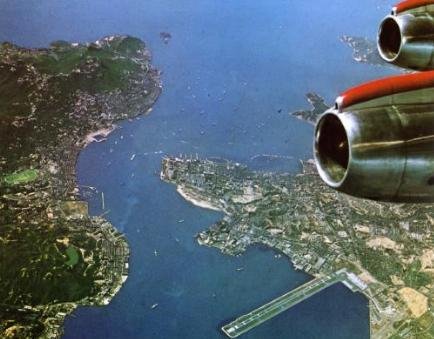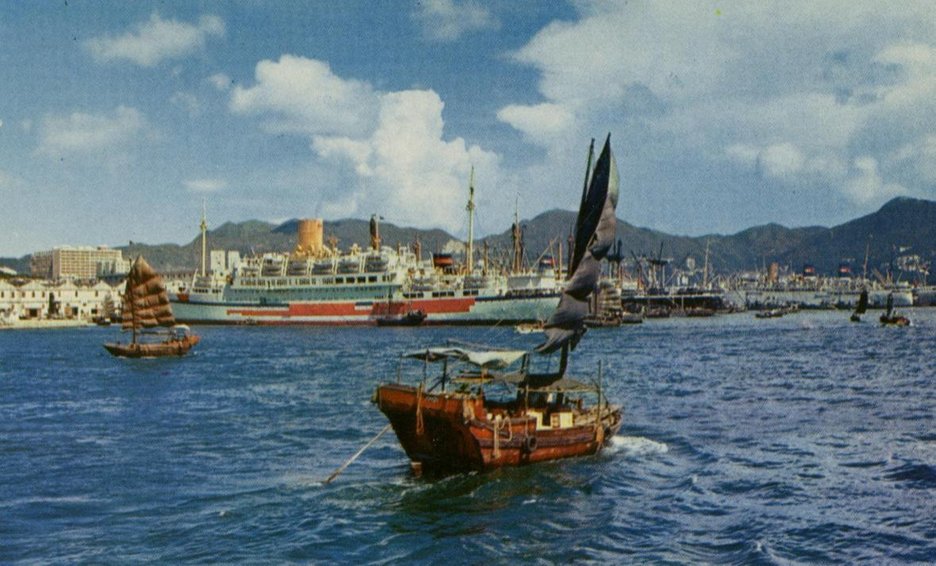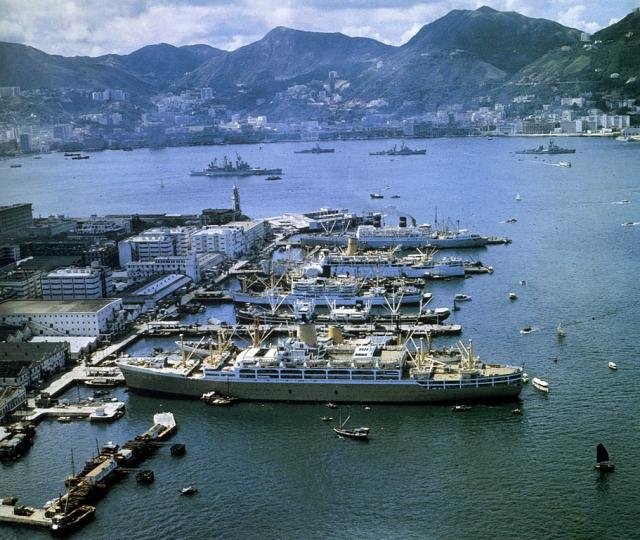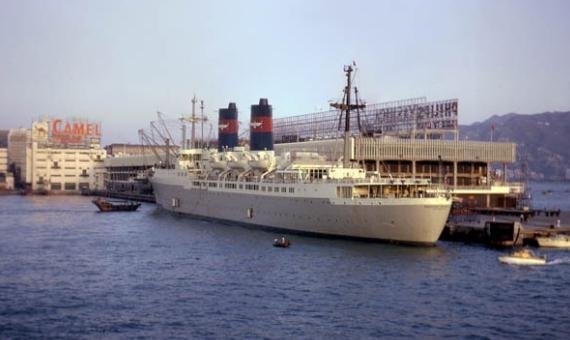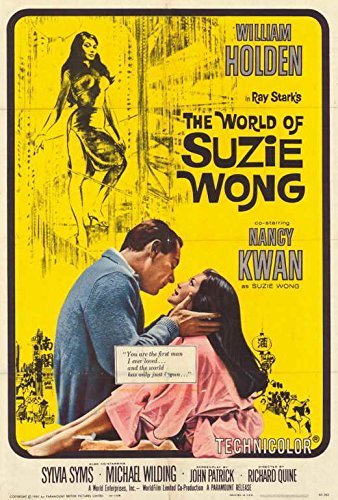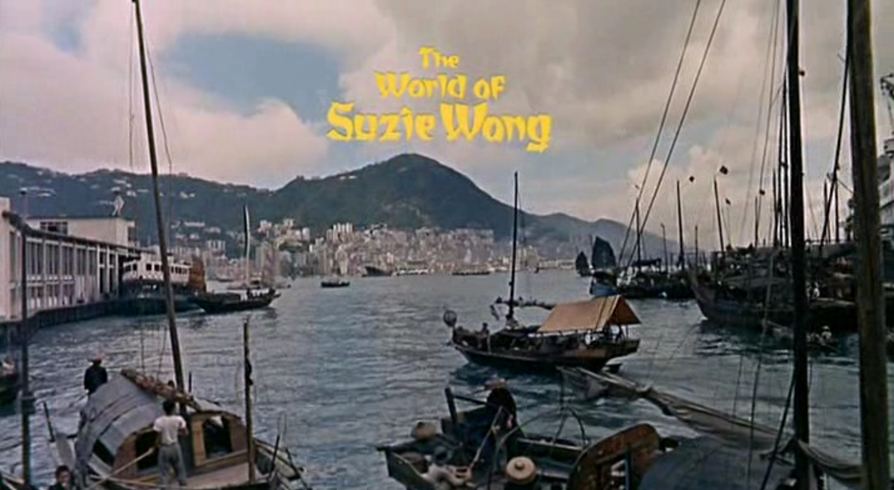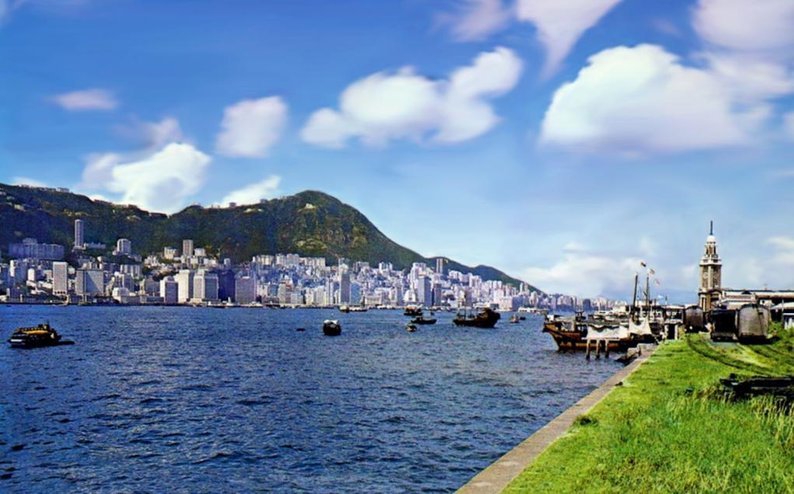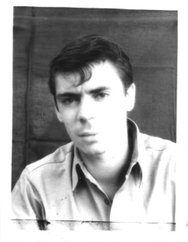Mandalay
M.V. Weybank - Chapter 9
Bangkok (continued)
The Thai Navy naturally wanted to draw out their vacation as long as possible and they had no trouble doing so because each and every thing aboard had to be signed off on individually before the shipyard could finally and officially hand the ship over to the navy. Sometimes it wasn‘t even the navy throwing a spanner in the works.
The corvettes were fitted with Italian Oto Melara 76mm automatic rapid-fire naval guns and Italian OM technicians were present at the shipyard during installation and also at Pattaya during sea trials. One of the times the Italians who were sent out from La Spezia were all soon homesick (apart from one - married of course- who had fallen madly in love with a Thai bar girl) and wanting to go home tried any excuse they could find to do so and during sea trials at Pattaya they found one.
For some reason during trials they had ran out of ammunition and told the shipyard that they would have to order new ammo from Italy. As it would take at least a couple of weeks they were going to fly home and would return when the ammo arrived. The shipyard in a panic contacted the navy asking if they could supply ammo which the yard would pay for. They agreed but when the navy ammo arrived the Italians said it was sub-standard and were not going to f… up their guns firing it. They were going home, subito! The shipyard tried offering them a stay at the most expensive hotel in Bangkok with additional daily spending money if they would at least stay in Thailand until the ammo arrived from Italy. Ciao, Arrivederci – they flew home!
I was thinking that they must all be nuts. Who wouldn‘t enjoy this kind of sojourn in Thailand? In retrospection I can now understand their point of view. Italy had just about everything that Thailand had to offer. Good food, wine, women and song. Great beaches, sunny warm weather – La Dolce Vita - what Italian needs Thailand?
Today you can go in the internet to YouTube and visit Patpong in Bangkok or any of the other „sin“ locations and for those that have never been there I can understand the excitement (for a better word) of it all.
Bangkok itself has many „Wats“ (Buddhist temples) some of which are spectacular such as Wat Arun, the „Temple of Dawn“ (shown below) on the banks of the Chao Phraya. However, mass tourism has long since destroyed the charm such buildings once had. Not the buildings themselves but the monks who run them who display an air of aloofness or even get bossy when demanding entrance fees to this and that. Some of the Wats on the Chao Phraya have temples stocked with fish tanks. Thais being Buddhists are forbidden from killing other beings be they human or otherwise. The fish tanks are part of a scam, especially when it comes to Thai women. The monks buy the live fish from fishermen to stock the tanks and then sell them „blessed“ to temple visitors in transparent plastic bags. The happy new owner takes the bag of fish to the banks of the river and releases them back into the river thus obtaining for his or her future life good „Karma“ points with Buddha.
There are also magnificent palaces to visit in Bangkok, amongst them the Royal Grand Palace (below), which with its collection of pavilions and golden spires can only be described as an oriental masterpiece. Inside the Royal Chapel there is the Emerald Buddha, which has been carved from a solid piece of jade. The palace is a true architectural masterpiece. Ayutthaya (about 40 km to the north of the center of Bangkok) which was once the capital of Siam is full of temple ruins and well worth a visit.
The Kanchanaburi War Cemetery is the final resting place for the remains of 7,000 British and Commonwealth troops who died in the vicinity when forced under Japanese captivity to work under atrocious conditions on the construction of the infamous Thai-Burma railway. The Japanese were in a hurry to get the railway completed and operational because it was crucial to the success of their impending invasion of NE India via Burma. Many more thousands of British/Commonwealth troops died at other sections of the line, the railway being layed through the worst kind of terrain imaginable. Around 50,000 Thai, Burmese or other ethnic minorities who were press-ganged into slave labour on the line also died.
The movie „The Bridge on the River Kwai“ was released in 1957 and became an instant international success. Appearing only 11 years after WWII had ended, it was based on a best-seller book written by the author Pierre Boule. On the one hand it tried to depict the inhuman treatment of the POWs by their Japanese masters but on the other it rapidly unraveled into a kind of „Mad Hatters Jungle Tea Party“ playing to the public sentiment of the victorious allied nations. It is one of the most iconic movies of our time and rightly so, not only because of the superb film script, camera photography and actors involved but also due to its signature music „The Colonel Bogie March“. The star of the movie is the English actor Alec Guinness, hard on his heals is the American William Holden and last but not least another English star Jack Hawkins and the Japanese actor Sessua Hayakawa.
The movie‘s bridge has a fleeting resemblance to a mini bamboo/teak version of the Firth of Forth bridge. The movie was filmed in Ceylon (now Sri Lanka) where the movie‘s bridge was also errected. In Thailand during the war, two bridges had been errected spanning the River Kwai but both had been completely destroyed by British and American air attacks before the Japanese capitulation. After the war a railway bridge was errected close to the vicinity of one of the originals and it has long since become a powerful tourist magnet. The bridge is in Kanchanaburi which is only a four hour drive NW from Bangkok. I always wonder if the tourists expect to see the movie version on their arrival.
The present day River Kwai bridge is shown above. There is a small town only 2km east of the bridge that you have to pass through to get there. I went to see the bridge only once and stopped on the way in the town for a drink and a smoke. When I got out of the car I found myself standing in front of the Kanchanaburi War Cemetery. I hadn‘t even known of its existence. I went inside, the only visitor, and slowly walked up and down the rows of the grave markers reading their names, rank, regiment and age. The cemetery is kept in immaculate condition as shown below and borders directly on the town‘s bustling main road. I thought that it was a good place for their final rest as they hadn‘t been relegated to some obscure „out of sight, out of mind“ plot somewhere else. Maybe it comforted their lonely souls a bit being so close to the freedom that they themselves had died for.
The charm of other locations in Thailand such as Chiang Mai in the north west has been destroyed by mass tourism. When I worked in Bangkok I would repeatedly come to a point where I needed to desperately escape for some peace of mind. Often on a Friday evening I would go to the main Bangkok bus station and take an overnight bus north eastwards to the Mekong River which forms the frontier between Thailand and Laos – completely off the beaten track. On arrival at whatever destination I had chosen I would dismount with a small backpack and hike through the magical countryside. By the late afternoon I would stop at the nearest village I could find where the inhabitants, most of whom had never seen a live „farang“ before would gather around me and before you knew it I was the life and soul of a spontaneous village party. I would ask to be shown to the village store where I would just about buy it out of Singha beer and bottles of so-called „Thai Whisky“ called Mekhong or Sangsom which is not whisky at all but rum because it is distilled from molasses. The villagers would start up a grill with such delicacies as field rat (not in anyway to be compared with Bangkok sewer rats which you could see running all over the place when you returned from some bar in the wee hours of the morning). The parties would go well into the night to the exotic beat of the kind of Thai music particular to the Thai/Laotian border. Their houses which were built of teak wood on pillars were spacious and cool inside. Later you were given a mat to sleep on after the partying had come to an end. More often than not one of the village girls would suddenly appear out of the darkness and lay down beside you. The girls or at least those few that could speak some English would tell you all about the village „love life“, for instance pointing discreetly at some attractive Thai woman villager and saying „ See that woman? You think she pretty? Her husband work Bangkok. She go sneak late everynight to sleep with village schoolteacher“
Thailand is an enchanting land which together with its cheerful friendly people have long ago found a place in my heart. But be beware, all that glitters is not gold. You can be sitting at your favourite bar with all the girls around you as usual when suddenly they part from you like the Red Sea - their place being taken by Thai police who ask for identification and then search you on the spot for drugs of any kind. And I mean any kind – even prescription drugs you might have on you like Valium can land you in a Thai prison in the blink of an eye. Your worst nightmare, ever! If you are caught with even a few grams of chrystal meth, Marijuana, opium, - you name it – you are looking at a death sentence.
You may think „Can‘t happen to me, I‘m a Brit (or US or German or Swedish or….), my government will step in and it will soon be all just a bad dream“. Wrong again! You don‘t need to be a rocket scientist to figure out why Thai drug squads concentrate on tourists. Apart from the obvious it is good international publicity for them when they hold perpitrators and evidence up in front of CNN or BBC cameras and spout words to the effect
„Look what we are fighting against to preserve the purity of our beloved kingdom“. Some of the condemned can get lucky when the king‘s birthday is celebrated. He traditionaly grants a royal pardon to some of the condemned meaning from the death sentence but not from the life imprisonment sentence which takes its place.
Never, ever make a derogatory remark about the king or the royal family. It is akin to drug smuggling.
When I was in Thailand the death penalty for drug smuggling/trafficking was carried out in what the Thais considered a more humane manner – at least as far as the executioner was concerned. Instead of a firing squad in which two thirds would be handed blank ammunition, the Thais opted for a 50 cal. machine gun, albeit a modified version. The condemned was lead into a courtyard and manacled to a chair behind which sandbags were
piled high. A large white sheet was suspended in front of the victim so that he or she could not see the MG. The machine gun had previously been placed and anchored in position and its sights adjusted to aim precisely at the chair. The modification to the machine gun? There was nobody behind it to depress its butterfly firing levers. It was remote controlled. Don‘t ask me if someone pressed a button somewhere or wound up a countdown clock mechanism or whatever. However I do know that even the shortest of a concentrated 50 calibre machine gun burst doesn‘t leave behind much more than a red stained „Photoshop- spray can“ effect where the condemned, plus chair had once been .
If there was one thing that ashamed me in Thailand it was European or US sex-tourists. All kinds of slobs, usually totally overweight with beer bellies. Wearing neon-coloured cut-off WWW wrestler type vests and zany Bermuda Shorts with flip-flops hanging from their feet they would slop their triumphant way down the Soi (alleyway) with a girl on each arm convinced that he was God‘s personal answer to women. Seldom missing was the red bandana tied around his empty head to signal to all passersby that he was at the least on a par with Rambo or Geronimo. „Hulk Hogan“ moulded in blubber. Watching them doing their „Easy Rider“ stuff on hired 500cc or 1000cc choppers cruising up and down Pattaya‘s oval main drag, the bar girls were at least kept entertained by these „Simpsons in Thailand“, unbelievable!
I‘m getting carried away so I‘d better say goodbye to Thailand now. Next stop – Hongkong!
Hong Kong
Our approximate course to Hongkong is drawn in red. From Bangkok it is about 1555 Nautical Miles (or 2880 km) which at our 15 kt speed took us just under four and a half days to cover. As we sailed along the Vietnamese coast in January 1969, the war in Vietnam continued to escalate. I listened to US AFN broadcasts from Saigon and Da Nang (years later Robin Williams played in a movie about it) and otherwise killed boring watch periods by trying to pick up MF or HF military communications.
In the international maritime medium wave band 405 to 535 kc/s, the frequency of 500 kc/s was used to call another ship or a coast station but it was also the international distress frequency. If for instance a ship became in danger of sinking, the Captain would give the Sparks the order to transmit an SOS signal. As soon as any other ship heard an SOS signal they had to immediately cease their own transmissions (usually calls to other ships or coast stations) and listen for the following distress message which would contain the distressed ship‘s position and the nature of his distress.
To lessen the possibility that a weak SOS signal from a ship in distress (if it was far away) might be drowned by the normal calling traffic of other ships and coast stations and therefore not be heard, it was forbidden internationally for any station (ship or coast) to transmit on 500 kc/s during two 3-minute time periods each hour. These were called the Silence Periods and were from 15 to 18 minutes and from 45 to 48 minutes past the hour. The radio room clock‘s face had these time periods painted in red segments as a reminder. During these periods the R/O had to listen on 500 kc/s for just such an eventuality as described above.
Medium wave transmitters aboard ships had a cap on their transmitter power as also did MW coast station transmitters but to a much lesser extent. A ship‘s daytime transmission range would cover around 300 to 400 SM but at nightime this range at least doubled ( I won‘t go here into the technicalities of why this was so).
Communist China PRC had MW coast stations at most of their major ports along the Chinese coast.
One night when we were east of Qui Nhon in Vietnam I went on watch as usual and 15 minutes later what did I hear opening up at the start of the silence period on 500 kc/s? Quotes from Chairman Mao‘s „Red Book of Quotations“ being blasted with high power transmitters over and beyond the length of the silence period. The closer we got to Hongkong the greater the signal strength and I could hear at least two other Chinese coast stations further up or down the coast doing the same.
They transmitted using a perforated tape punched with the morse code which they fed through a tape reader to key the transmitter. This was done during every silence period ad infinitum.
It was internationaly forbidden for R/Os to use any obscene language in communications but as soon as the Chinese paused until the next silence period, just about every ship in the vicinity opened up with their own quotes: „Mau is a wan*er“, „F… Chairman Mau“, „Mau is a h*mo“, „Confucius say Mao got small pr*ck“ and so on. I could imagine the Chinese leafing through their dictionaries trying to find out what „wan*er“ meant.
To give some context to the above:
Launched by Mao Zedong in 1966, the "Cultural Revolution" raged throughout China until 1976, killing an estimated 500,000 to 2,000,000 Chinese in the process. Mao's popularity had been by 1966 in sharp decline and he knew that to stay in power he had to do something about it, and quick, and he did - terrorized the nation.
Mao alleged that bourgeois elements had infiltrated the government and society at large, aiming to restore capitalism. To eliminate his rivals he insisted that "revisionists" be removed through violent class struggle. China's youth responded to Mao's appeal by forming Red Guard groups around the country. These Red Guards were none other than school kids/teenagers who were suddenly given immense and uninhibited power.
Destruction of the "Four Olds" was demanded; namely: old customs, old culture, old habits, and old ideas and the zealous Red Guards went on the rampage!
Around this time we aboard were hearing reports about British ships that had visited Shanghai and Canton (Guangzhou) with cargo. On arrival their ships had been swarmed by Red Guards and their crews including the captains humiliated, forced to knee down on the main deck for instance while the mob harangued them with their anti-capitalist rhetoric. Some of the crews were arrested and hauled ashore where they underwent a form of „re-education“ while at the same time being uncertain as to their fates. It made me think about the shipping owners who still ordered their ships to these ports although well aware of what was going on there at the time. It made you think that the „anti-capitalist“ Red Guards maybe had a point to make after all.
The map below depicts the border of the British Crown Colony of Hongkong as it was in 1969, the area of which was to a great extent (the „New Territory“) an extension of mainland China, the rest being comprised of a number of islands, Lantau (Tai Yue Shan) and Hongkong Island being the largest of them.
The land border which runs from Lak Ma Chau to Sha Tau Kok and follows the Shenzhen River is 25 miles in length. Reading above about the Red Guards etc. you might have expected the border to be heavily guarded or even mined but until the introduction of immigration control in 1950, Chinese people were allowed free entry into Hong Kong. There was no restriction on the Chinese side from leaving the country, either.
A Frontier Closed Area (FCA) was established in 1951 to serve as a buffer zone along the Shenzhen River. Hong Kong residents were not allowed to enter it without a permit, and a number of villages were trapped within the FCA.
In 1950, the Hongkong government started to restrict immigrants, yet under a lenient and haphazard policy which lasted until 1974. This policy was first seriously disrupted in 1956 by riots instigated by the PRC but which died out soon after.
HK appeared in the 60s and 70s at first glance as a „haven of peace“. War raged all around - an internal „class“ war in China, the US in Vietnam and the subsequent US invasion of Cambodia; the Khmer Rouge „killing fields“ and the retaliatory Vietnamese invasion of Cambodia.
However, in 1967 (less than two years before our arrival aboard the Weybank), Mao gave the go-ahead to his Red Guards to stir up trouble in Hongkong. This resulted in some serious riots in HK
which were successfully supressed but not without numerous deaths and injuries. For whatever reason, Mao decided thereafter that it wasn‘t such a good idea after all and turning his focus back to the mainland, HK returned to „business as usual“.
The PRC propaganda poster above was clandestinely pasted on Hongkong walls. Translation of the Chinese reads: „Our nation’s millions of Red Guards resolutely support the patriotic compatriots of Hong Kong and Kowloon in their anti-English struggle against violent repression!”
A “Touch Base Policy” was introduced by the HK government on 30 November 1974 and this policy lasted until October 1980.
Taking the configuration of Hongkong Colony to be a ballpark, it indeed worked something like a baseball game: incoming immigrant illegals from the PRC spotted and arrested in the hilly terrain of the New Territories were regarded as “out” and forcibly repatriated to the PRC; while migrants who succeeded in making their way to Kowloon or Hong Kong Island were considered “safe” and allowed to remain, and were issued with Hong Kong identity cards that gave them the right to work in Hong Kong.
Since the former British enclave reverted to Chinese rule in 1997, the formal border is still in operation between mainland China and Hong Kong today. The 25-mile-long boundary still runs in the middle of Shenzhen River, separating Hong Kong from mainland China and giving Hong Kong the moniker of a “Special Administrative Region” (SAR). Travelers still need to clear passport control when moving between Hong Kong and the mainland, just as they would at any other international border. Like the boundary itself, the FCA was kept in place after 1997, but significantly reduced in size.
The black boundary in the map above now pertains to the SAR.
In accordance with the "One country, two systems" principle agreed between the UK and the PRC, the socialist system of the PRC will not be practised in the Hong Kong SAR, and Hong Kong's previous capitalist system and its way of life will remain unchanged for a period of 50 years. This should leave Hong Kong unchanged until 2047 but while writing this in 2019, the Hong Kong Chinese are out in the streets daily, demonstrating against the PRC which is trying to change the
terms of their agreement made with the British i.e. get HK law changed so that those they regard as troublemakers can be extradited to mainland China and face punishment under PRC law.
The map above was drawn in 1910 but I included it here for three reasons. The first being the English Miles scale which shows just how small HK Island is. The second to show how mountainous the island is. The major peaks (nine of them) are marked as small triangles and their respective heights are shown in feet e.g Mt. Davis 889, Victoria Pk. 1768 (the highest on the island).
The mountainous terrain of the island has to this day restricted building to narrow sections of coast line. Victoria has spread eastwards along the northern shore but the mountains still resist construction efforts which is why even today about 70% of Hongkong Island is still nature reserve territory. Aberdeen Harbour is famous for its fishing junks and floating restaurants. The village marked Taitam is amongst English speakers more commonly known as Stanley.
The third reason is that the P&O Berth is shown in Kowloon (named Kaulung on the map) and just south of it Kaulung Pt. The P&O berth was one of a number of parallel piers where passenger liners from all nationalities and also British troop ships tied up. The piers and Kaulung Pt. are in an area called Tsim Sha Tsui which is where the Kowloon terminal of the Star Ferry Co. is also located.
In the map above the Tsim Sha Tsui Star Ferry terminal is shown as two little teeth. The pier just above and to the left is the Ocean Terminal which was built in 1966 in the place of the first of the Tsim Sha Tsui piers.
Star ferries ran two main routes; from Tsim Sha Tsui to Victoria Central terminal and TST to Wan Chai. No matter from which of the three terminals, a Star ferry left on average about every 7 minutes. They started at 0630 and ran until 2330. Star ferries, still in operation today have been running for over 100 years.
Kowloon rapidly grew to become a city, not only because its terrain enabled construction but also due to the Star ferries maintaining the commercial aorta between Kowloon and Victoria. The Central District was (still is) the commercial „banking“ heart of Victoria. Wan Chai was until the end of WWII an area of the worst of slums. Later it became a favourite tourist nightclubs hotspot.
In the map above you can also see the area of Kai Tak Airport and what is a runway extending into Kowloon Bay. Before WWII Kai Tak was an RAF airfield and Sunderland flying boat base. It was also used as a flying boat base for commercial long-haul passenger flying boats (amongst them being the PanAm „Clippers“). After the war in 1958, a new 2,550-metre (8,350 ft) long runway extending into Kowloon Bay was completed by land reclamation. This runway was extended further in 1974 to 3,390 metres (11,130 ft), its final length.
The photo above was taken from an Air India Boeing 707 on the opening day of the extended Kai Tak runway.
What appears to be four high smokestacks rising from Kowloon are in fact four of the Tsim Sha Tsui passenger ship piers.
The cross-harbour Road Tunnel which was completed in 1972 is in fact two steel tunnels, each with two traffic lanes. This was the first major competition that Star Ferries faced. Another competitor in the form of car ferries had appeared in the sixties. Years later two harbour crossing toll bridges were built, a western from the area of Sai Ying Pun diagonally to northern Kowloon and an eastern from just east of North Point to Yau Tong. Both caused a serious problem to the future of Star Ferries. However, Star Ferries today are still puffing along and carry an estimated 26 million passengers a year across the harbour.
The photo above is of ships tied up to the Tsim Sha Tsui piers the early 1960s. To the left is a British troop ship which is getting a paint job . This was common practice – on arrival a horde of Chinese painters would swarm over a ship and from planks lowered from ropes would start chipping and painting while the vessel discharged/loaded cargo and disembarked/embarked passengers. To the right of the photo the ship with a buff funnel and white hull is either the P&O liner „Carthage“ or her sister ship „Corfu“ and behind her is a two-stack US liner, either the „President Wilson“ or her sister ship „President Cleveland“ (which ran from San Francisco across the Pacific to Hawaii, Philippines, Japan and Hongkong).
The early 1960s aerial photo above of the Kowloon TST piers (before the Ocean Terminal was built) shows closest to the viewer the Orient liner „Orsova“. The farthest liners are the P&O „Canton“ and the „President Wilson“ or „President Cleveland“. The Star ferry terminal is just to the right of the iconic Clock Tower. Below, the „President Wilson“ is shown tied up alongside the new Ocean Terminal in 1966.
In 1969 a visitor to Hong Kong would marvel at its quiet, confident calm. There were no blackened hulks of buildings, no hateful stares such as marked the burned-out ghettos of a half dozen American cities. Indeed, the jewel of Britain's colonial empire seemed to sparkle with all its luster. Star ferries plow across a sapphire harbor crowded with ocean-going freighters, square-sailed junks, and deadly-looking U.S. warships just in from battering North Vietnam with their cannon and planes.
Only slowly does the realization seep in that Hong Kong is a city besieged by local Communist guerrillas. Ubiquitous gray Land Rovers filled with steel-helmeted riot police armed with tear gas and carbines prowl the streets. Instead of their usual wares of Tientsin rugs and carved ivory, the colony's Communist Chinese stores now plastered their windows with pictures of British police brutality, with crepe-draped portraits of slain Communist agitators, and with Maoist slogans urging the city's four million Chinese to "paint Hong Kong red from the earth to the sky."
After months of agitation which slowly escalated from labor strikes to militant demonstrations to violent riots and armed terrorist attacks, May 1967 clearly signaled the beginning of a Maoist "people's war" against the British in their own colony. But, strangely enough, it proved to be a "people's war" without people, and this alone kept the British from having another Aden on their hands. For the most remarkable fact about the Communist effort had been its complete failure to spark a responsive chord in Hong Kong's Chinese. Unlike Burma, Cambodia, and Nepal, where Maoism has burst the bounds of the Chinese Embassy, Hong Kong is a Chinese city; it is a colony, and it is contiguous to China. It should have been ripe for revolution.
British propaganda and police work carried the day, but the battle remained far from over. Small-scale riots still broke out intermittently; terrorist attacks against public buildings and government employees grew in intensity; in 1967 more than 1500 bombs had been planted. Although most were duds, some exploded, and civilian casualties from bombings become a new fact of life in Hong Kong. This was the scene set for us in 1969.
And now to the good bit - a new generation of Suzie Wongs, more alluring than ever in their mini-cheongsams, still pester fuzzy-cheeked sailors to buy them "one more" tea (masquerading as whiskey). Suits can still be made in twenty-four hours, and shops with showcases bulging with gold, jade, cameras, and watches still offer the luxuries of the world at a fraction of the cost paid elsewhere. Thc Hong Kong of myth, legend, and travel poster lives on.
Above is a screen shot from the opening scene of the movie (which was released in 1960). Unfortunately they didn‘t choose a bright sunny day for the opening but, as you will soon read, it was weather we could only have wished for on our own arrival.
The opening scene shows a junk moving from right to left towards the Star Ferry landing terminal at Tsim Sha Tsui (TST) in Kowloon. There is a Star ferry already tied up at the terminal. Straight ahead is the waterfront of Victoria Central with Victoria Peak in the background. To the right of the screenshot, the superstructure of an ocean going liner is just barely visible. In this opening scene the camera pans across to the right to capture the vessel tied up at the first of the TST piers – it is the „President Wilson“ from which William Holden disembarks and marches off to the Star ferry terminal to catch a ferry across to Victoria Central. The „Radiant Star“ has just cast off when William is attracted to another passenger - Nancy Kwan (Suzie Wong). Suzie Wong is a „hooker“ but pretends to be the daughter of a rich Chinese businessman – and so the love story starts.
Above, Hong Kong Central viewed from Kowloon (note the Clock Tower) in 1969.
Speaking for myself, the book of the movie „Suzie Wong“ was just about the only Hongkong reference guide I had and I avidly turned over its pages in my mind. If William could do it, so could I – meet my very own „Suzy Wong“! My „Suzy“ wouldn‘t be a hooker but her father would still be a multi-millionaire business tycoon. I started daydreaming: „Sorry guys, the wedding reception‘s on the 25th in the Hongkong Hilton Ballroom, five thousand guests already on the list. I would have invited you all but as you know you will all be by that time already in Taiwan, so sorry“.
Returning to reality, the Weybank‘s own opening scene commenced as we approached Hongkong Island from the south between Cheung Chau Island and Ap Liu Chan (Lama Island) and picked up a pilot. Our troubles started when we soon ran into thick pea-soup fog. Apart from having a pilot aboard we had our radar running as we slowly turned east into the strait known loosely as Victoria Harbour. We were moving at „slow-ahead“/“half-ahead“ intermittent speeds and keeping our eyes glued not only outside but on the radar screen. On the radar we could pick out vessels (steel targets) moored at bouys in the harbour but small vessels such as junks, being built from wood and therefore bad radar beam reflectors were another story. We could pick out the larger cargo junks but smaller ones would only appear as a smudge with luck on the radar screen with every two or three revolutions of the radar antenna.
I was standing on the bridge half-asleep staring ahead like all the rest of us into the soup, almost drowsing off until the next blast from our fog horn would cause me to jump out of my skin before slowly drowsing off again. Suddenly, all hell broke loose, „F…, F…, What the F…!“. I and all the others in the wheelhouse saw hard on our port bow a red/orange flash of colour rise up above the f‘ocsle. A junk had cut across our bow but with our slow speed we didn‘t just slice through her. Our bow rose up on contact and with our weight pushed her down as we went over her. We had hit her close to her bow section and this caused about two thirds of the rest of her hull on our port side to rise and twist out of the water smashing her hull, masts and sails against us in the process. We all ran to the port bridge wing just in time to see the crumpled wreckage scrape down the length of our hull before being given a final farewell whack from our propellor.
I can‘t remember seeing any of the junk‘s crew, not even any that might have jumped or been thrown into the water but I remember to this day seeing the wreckage disappear aft into the fog surrounding us. We were in territorial HK waters and therefore by law not permitted to transmit in MF or HF. The question of sending an SOS or XXX type of signal however never arose. We were in VHF contact with the pilot station. The pilot picked up the VHF handset, did his thing and then we continued on our way. No „Stop Engines“ or any other such command. To be pragmatic about it, it was a sensible decision. Stop engines and become unmaneuverable in the middle of Victoria Harbour in thick fog? A no brainer! I still though to this day wonder if anyone in the HK harbour authority bothered to try to locate the wreckage/possible survivors or if they just took the stance „ one f…… junk less“.
We crept along our way until we somehow reached our delegated mooring buoy where a couple of small sampan boats were waiting (who needs radar on a sampan?) to pick up our mooring lines. The fog didn‘t lift for the rest of the day, our gloomy introduction to HK.
The next morning I was given a very early wake-up call. The sunlight was already streaming through my cabin. A beautiful sunny day. The reason for the early wake-up call? A Chinese photographer had arrived aboard to take passport size photographs of each and every crew member (roughly sixty of us). We later all got a souvenier copy of the same. (These photos were stuck onto Taiwanese identification papers and stamped by the police/military on our arrival at our next port of call, Kaohsiung – my HK „Mugshot“ shown below).
To be continued in the next Chapter - ran out of space on this one........
